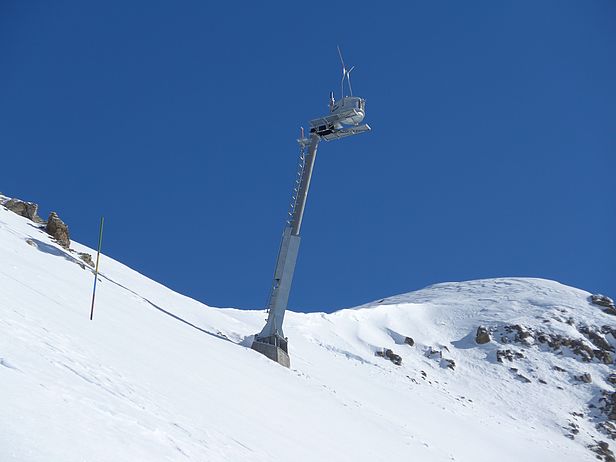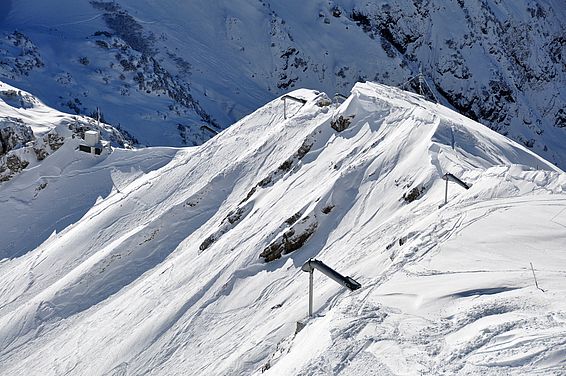Artificial avalanche triggering is important in Switzerland for the protection of transport routes, residential areas and snow sports areas. The aim of the operations is to temporarily secure possible avalanche zones, avalanche paths and deposition areas and to prevent large avalanches and longer closure periods.
There are numerous methods of artificial triggering such as hand-thrown charges, blasting by helicopter or permanently installed triggering devices. However, the same principle always applies: when an avalanche is triggered artificially, an explosive charge or an explosive gas mixture is detonated in the avalanche start area, which causes a pressure wave and thus an additional load on the snowpack. The pressure can initiate a fracture in the snowpack, e.g. a weak layer. As a result, the fracture spreads and the snow slab slides off.
In recent years, permanently installed detonation systems have become increasingly popular and are now widely used. These allow detonations with explosives or gas to be generated above the snowpack, which results in a large-scale additional load on the snowpack. The systems can be operated from a safe distance, at any time of day and in any weather. There are over 600 permanently installed blasting systems in Switzerland. These systems are increasingly being combined with new technologies such as avalanche detection systems or warning and alarm systems to monitor the safety operation and control the area at risk.
The choice of method depends in particular on the tolerated closure time, the residual risk, the topographical conditions, the time of execution, the required blasting effect and the costs. We compare the various blasting methods and publish the results in publications. These help those responsible for security to select a blasting system that is suitable for their needs.

